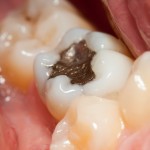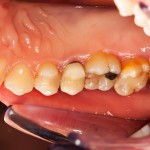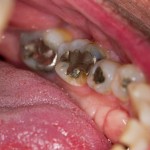
8 studies were included in this review comparing amalgam with composite in posterior restorations. There was a statistically significant benefit in favour of amalgam for both restoration failure and secondary caries.
[read the full story...]
8 studies were included in this review comparing amalgam with composite in posterior restorations. There was a statistically significant benefit in favour of amalgam for both restoration failure and secondary caries.
[read the full story...]
Only 10 low quality studies were available for this review to assess if a vital pulp restored with composite resin is at greater risk of pulpal complications than one restored with other materials. Questions over the studies qualities make it difficult to draw any conclusions.
[read the full story...]
Amalgam has been used for filling teeth for around 150 years. Over that time amalgam restoration have been shown to be a predictable, successful and cost effective. Concerns regarding aesthetics and their mercury content together with improvement in tooth-coloured dental resin cements have seen a decline in their use. Recently the Minamata Convention on Mercury [read the full story…]

Dental amalgam has been the dental material of choice for many decades. Although, in recent years a greater focus on aesthetics and concerns related to the potential environmental impact of mercury coupled with a more conservative approach to cavity preparation and improvements in aesthetic restorative materials is leading to a decline it its use. In [read the full story…]

Atraumatic restorative treatment (ART) involves the removal of so softened carious enamel and dentine with hand instruments and filling the cavity with a adhesive restorative material. Typically this is a high-viscous glass ionomer cement (GIC). This approach was about 25 years ago to provide care in less industrialised areas with high disease levels but is [read the full story…]

Replacement of defective restorations is the commonest procedure carried out in general dental practice. Replacement generally means some further loss of tooth substance and enlargement of the restoration. Alternatives to full replacement have improved restorations and increased longevity. The aim of this study was to estimate the median survival time (MST) of marginal sealing, repair [read the full story…]